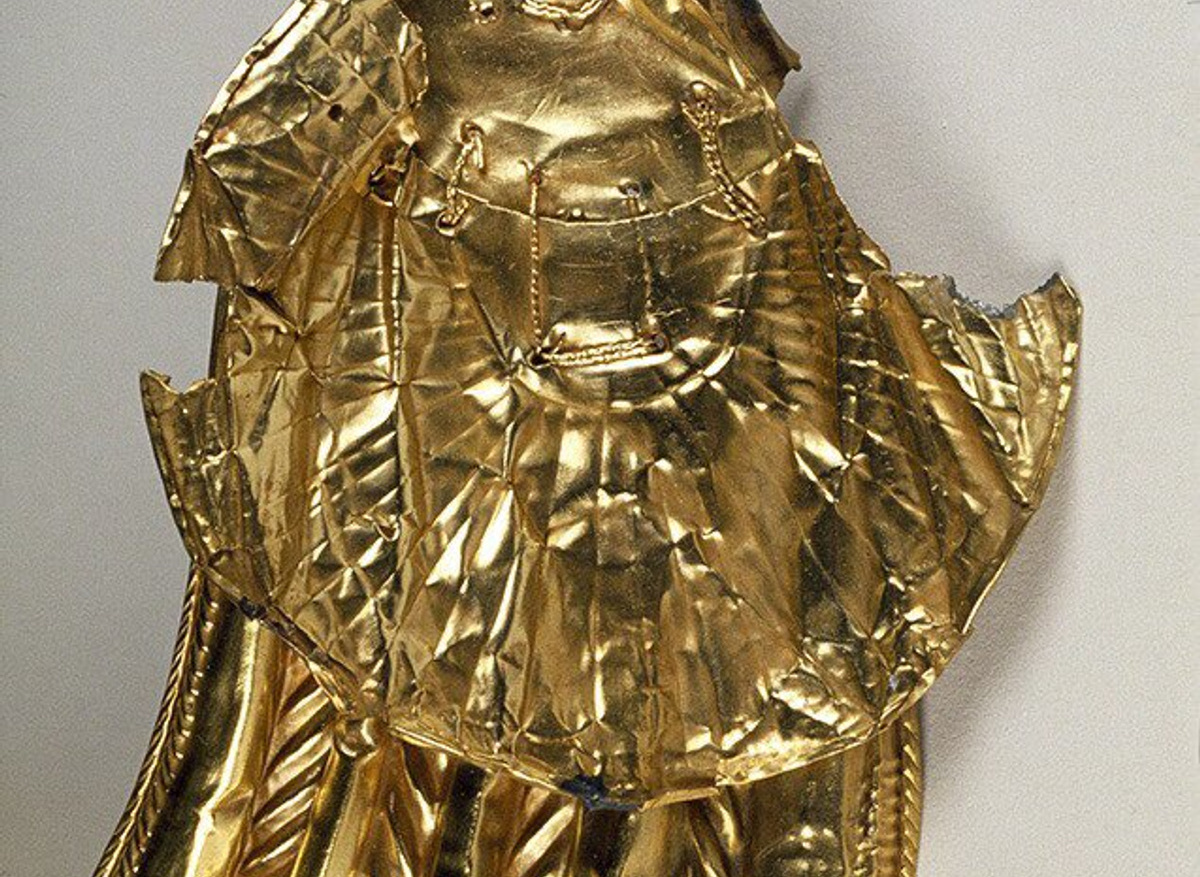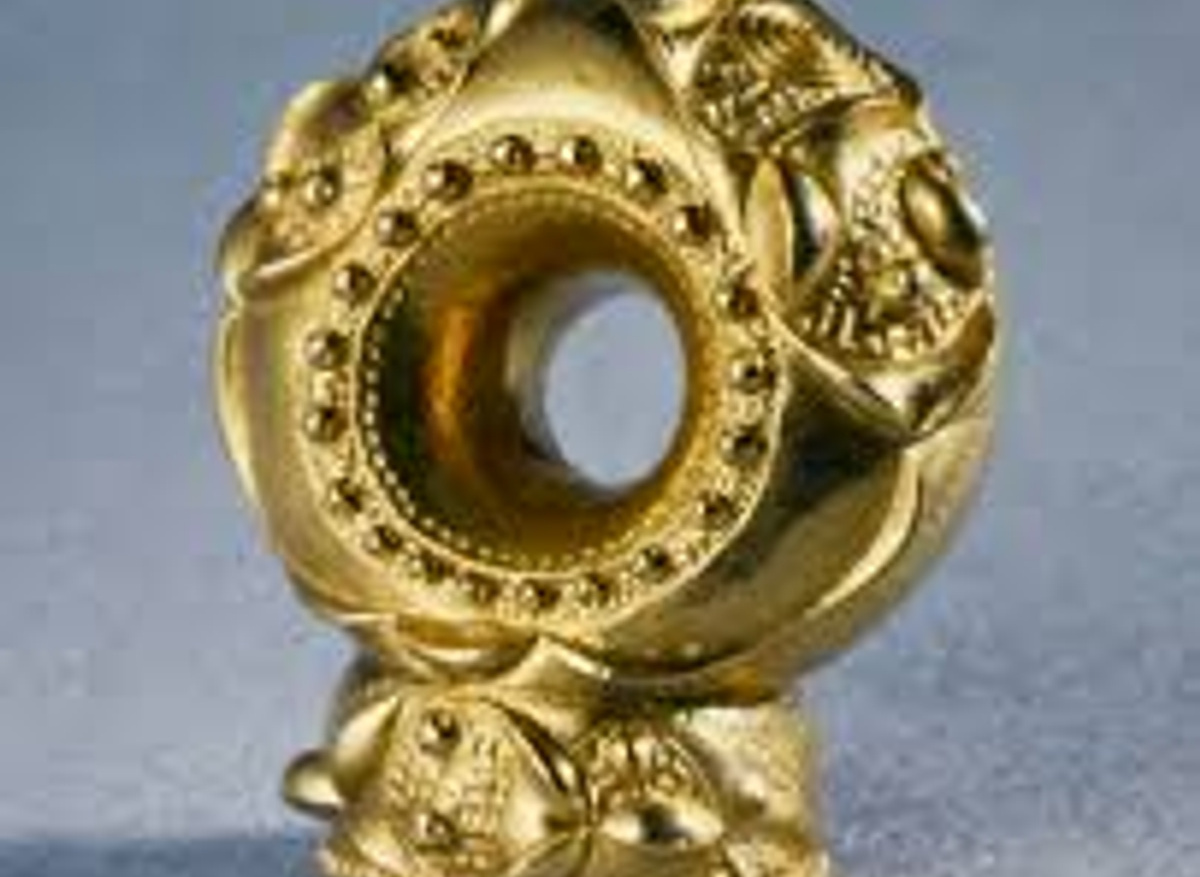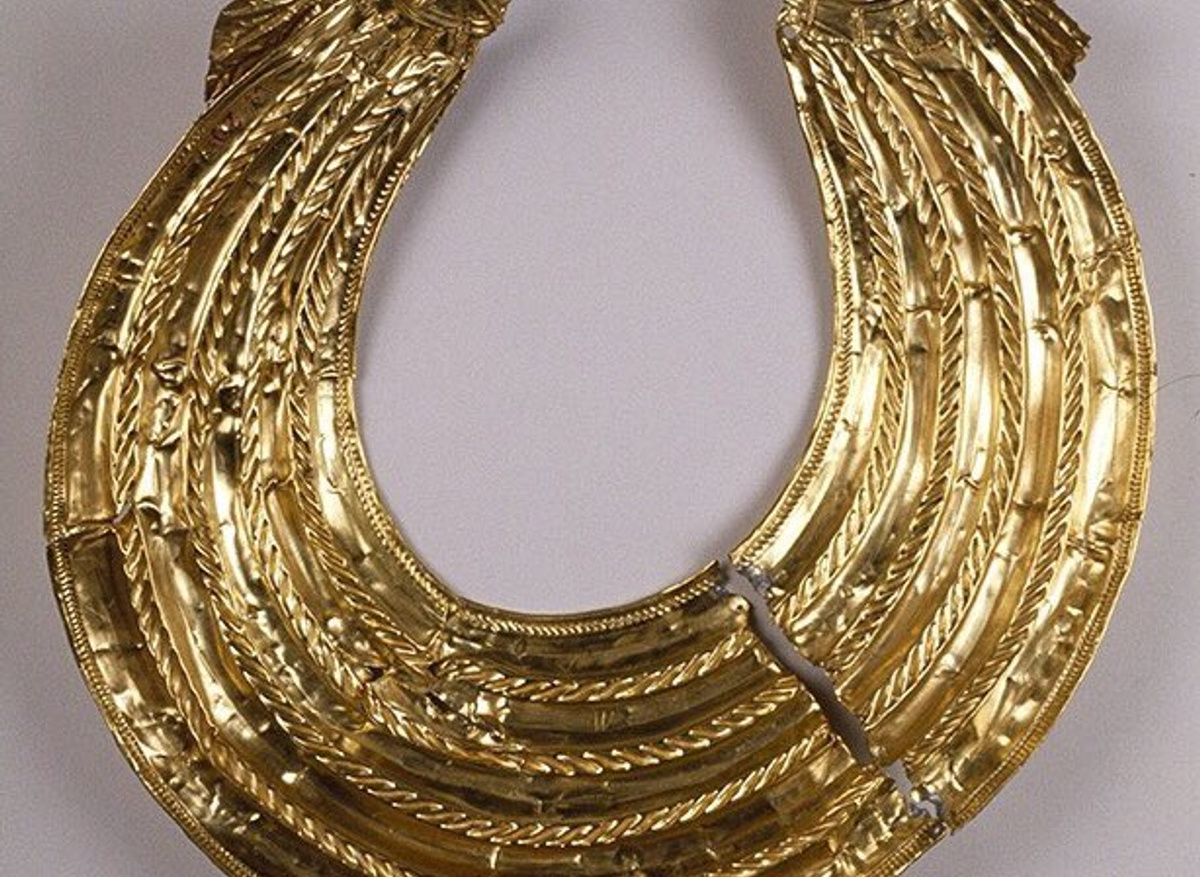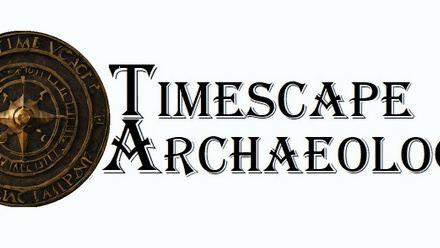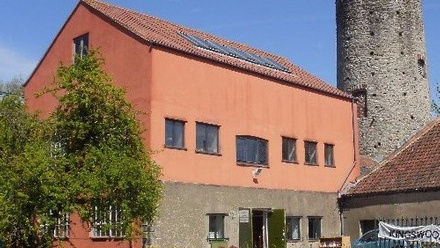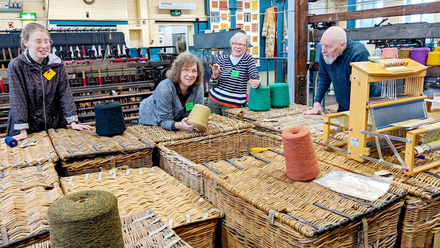I can hear you thinking, 'Oh my goodness! How rude!'. You might also be wondering what on earth all this has to do with archaeology. But, it has a huge amount to do with archaeology. In fact, it's an essential activity for all artefact specialists. I research Iron Age gold torcs and associated metalwork and I spend much of my time trying to see inside, behind and under things. Because that's where the clues are, that's how we can work out how things are made. And that's what my Day of Archaeology will involve -thinking about insides, backsides and underneaths!
For many years, I worked first as a field archaeologist, then prehistoric pottery specialist then had a brief wander off into Caribbean 17th century forts, where I got my PhD. Then I had a daughter and spent time with her. But now I'm back in prehistory and carrying out some amazing research: I get to play with some incredible artefacts which are all made of gold! And not just any gold artefacts, but gold Iron Age torcs. Cassius Dio, a classical author, described Boudicca wearing one, and although Boudicca was around probably a few hundred years after the torcs I research, it's still an exciting thought that I research an object type with such illustrious connections! Below are three of the torcs we've looked at: The Netherurd torc terminal from Scotland, the Snettisham Great torc from Norfolk and a close-up of the Newark torc from Nottinghamshire.
I am really lucky to be working with a museum replica maker, called Roland Williamson, who makes the most beautiful copies of ancient artefacts for museums. Here's a few of his: a replica of the Iron Age South Cave sword found in Yorkshire, a copy of the South West Norfolk torc from Norfolk and a lovely version of one of the Knutsford hoard brooches from Cheshire.
Makers understand how to, yes you guessed it, make things and they like to look inside, behind and under things to tell how other people made things too. This is a skill that is really useful if you want to be an artefact specialist. Because it is critical if you want to understand an artefact: understanding how something was made can tell you much about techniques at the time, who was using what technique, where those techniques were most common and whether the artefact was traded/gifted beyond where it was made. In short, it unlocks a lot of archaeological research.
About four years ago, Roland mentioned that he didn't think that Iron Age gold torcs were made the way that many archaeologists thought they were. With 35 years of experience in making things, his ideas are always worth listening to and in time, and with more research, we managed to show that the majority of gold torcs were not cast, but were instead made of gold sheets. If you want to know more then please have a look at our previous Day of Archaeology posts. We've also published a paper about our work.
So, what does any of this have to do with bottoms? Well, our latest research is all about the insides, backsides and underneaths. We're looking at how these gold torcs were decorated and in particular, we think we've come up with a pretty amazing method for how the high relief (the lumpy bits) was created...and it doesn't seem to have much to do with the traditionally accepted 'repoussé' method where the raised areas were created from the back side (bottoms again!) of the item. We're currently looking further east....in fact, the closest comparison we can find is a technique used by traditional Japanese metalworkers! Which, although this is obviously a coincidence, does make for some interesting comparisons about gold working techniques! We'll be publishing our first thoughts about this in a newsletter article for The Prehistoric Society in the autumn, so keep an eye out.
In the meantime, I'll leave you with some lesser-known backsides: The Iron Age Battersea Shield from the British Museum, and the back of magnificent Bronze Age lunulae from the National Museum of Ireland (with thanks to Mary Cahill @au_Ireland).
So, the next time you're in a museum have a look behind, under and inside objects and you will see so much more. And remember the Number 1 Rule of backside viewing: If you haven't left a nose print on the glass, or got dust on your knees, then you're not trying hard enough.
Bottoms up!

